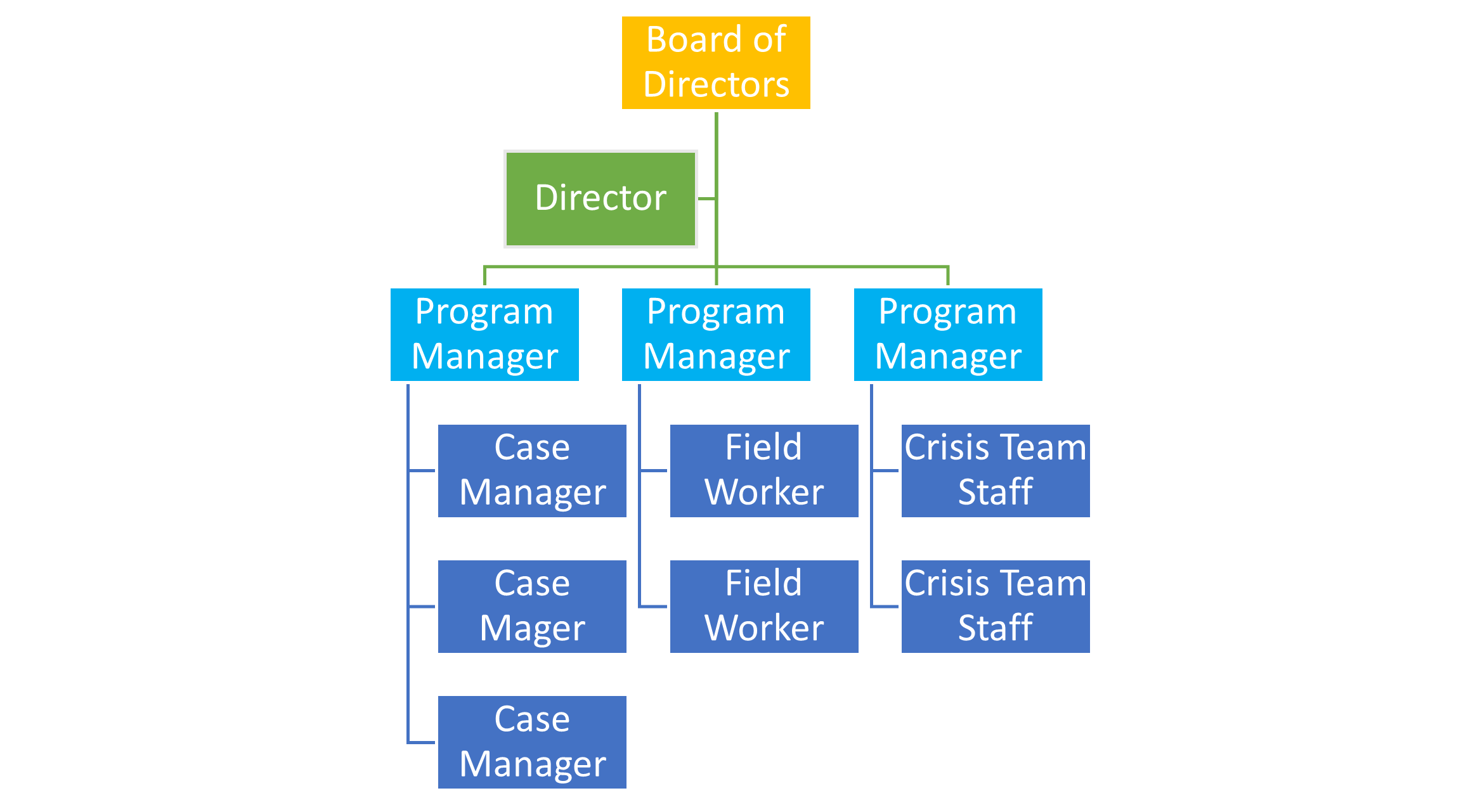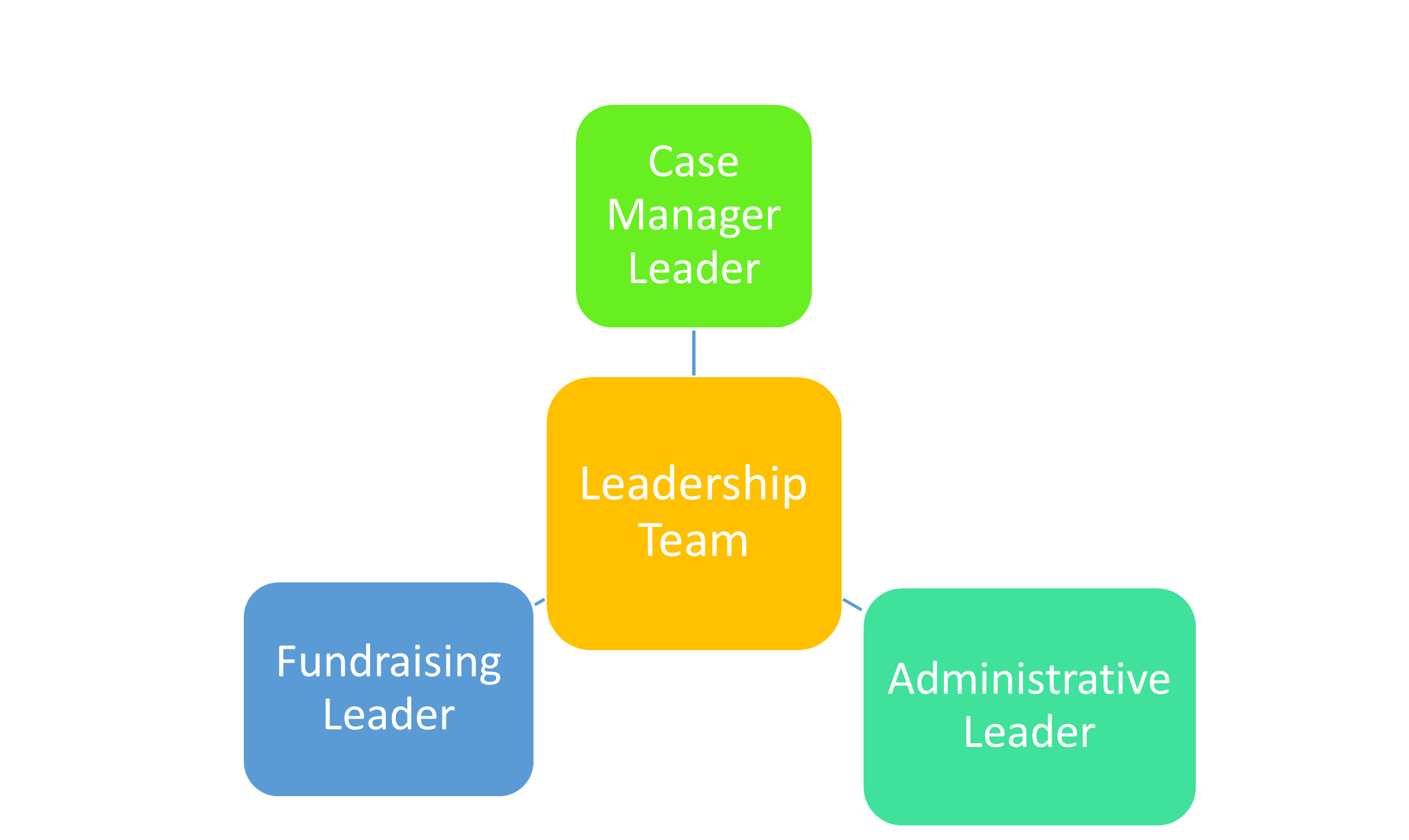26 Organizational and Intervention Structures
The interventions that are identified to address community needs and situations will either need to fit within an organizational structure or may require the establishment of a new organization.
So, let’s review some of the most common organizational and intervention structures in which people facilitating change find themselves working or volunteering. They include:
- Mutual aid
- For-profit
- Non-profit
- Government and Tribal Nations
Mutual Aid
Mutual aid is a method of collective action to meet people’s needs, often during a time of crisis. It is a method of aid that does not require (nor desire) formal intervention or funding. It is designed to be built on collective goodwill and support. In Mutual Aid: Building Solidarity During this Crisis (and the Next), Spade explains that this type of collective support is very common during social movements and the types of activities that are “based on the shared understanding that the conditions in which we are made to live are unjust.” [1]
In my home state of Minnesota, we have witnessed so many powerful examples of mutual aid in just the past few years, as neighborhoods and groups came together to keep each other safe and fed during the aftermath of the George Floyd murder and then the pandemic.
For-profit Organization
An organization that operates to improve people’s lives but also can generate a profit and reinvest those funds into the services or for any other purpose. A for-profit organization does not benefit from tax-exempt status which may significantly limit funding opportunities but does retain flexibility with how funding is expended. This includes salaries.
Non-profit
A non-profit or non-governmental organization (NGO) describes a category of organization that has been designated by the IRS as having tax-exempt status, most commonly receiving the 501(c)(3) designation due to its charitable mission and documented purpose to address a social need. The expectation for the organization is that it invests any profit back into the services. Nonprofits are typically eligible to receive donations from charitable philanthropic organizations and financial donations from individual investors who may be able to receive tax deductions for their contributions.
In order to start a nonprofit, you need to work through a series of very important steps, since the organization needs to demonstrate its ability to follow strict guidelines and oversight as defined by the IRS. The steps include the following:
- Establish the charitable purpose; community need and impact
- Create a clear and succinct mission statement
- Recruit board of directors
- Create and file the Articles of Incorporation
- Establishes the organization as a legal entity in the State where it will operate
- Create bylaws
- Rules governing the organization and the Board of Directors
- Secure tax-exempt status
- Develop Strategic Plan (3-5 year plan) and Initial Work Plan (1-year plan)
- Secure funding, location, and staff
- Marketing
The Board of Directors is responsible primarily for the fiscal oversight of the organization as well as the hiring and supervising of the executive director. It is important that a board of directors includes the perspectives that are critical to the work of the organization (geographic representation, life experience, professional experience, demographic, identity, etc.). For example, the board of directors for an organization whose mission is to contribute to the vitality of persons with differing abilities should ensure that people on the board of directors also have experience living with a disability.
Many helping professionals serve on the board of directors as a way to meet other people who share a similar interest in community change work, and to contribute to the social service sector of their community.
Example: indiGO.
indiGO is the Regional Center for Independent Living (CIL) located in Wisconsin that serves Ashland, Bayfield, Burnett, Douglas, Iron, Price, Sawyer, and Washburn counties, as well as the Bad River, Red Cliff, Lac Courte Oreilles, and the St. Croix Tribal communities.
CILs are consumer-controlled, community-based, cross-disability, nonresidential private nonprofit agencies designed and operated in our local communities by individuals with disabilities to maximize their ability to live independently.
indiGO’s board of directors and staff are comprised of at least 51% people with disabilities. It is part of their way to ensure consumer control of the organization. They strongly believe that the lessons we learn from our disability experience provide valuable information to other consumers. They are also intentional about seeking geographic representation. As of 2022, they have parents, Native Americans, city counselors, bankers, community advocates, and people from a variety of backgrounds serving on their board.
Their mission is to Empower people living with disabilities to thrive independently.[2]
Government and Tribal Nations
Government human services departments, such as county or Tribal Nations human services, are frequent employers of social workers and other helping professionals. The objective of a county government is to provide services to people identified as most vulnerable, particularly children, older adults, and people with disabilities. The types of services typically include economic assistance assessment, food support, child protection, elder protection, foster care recruitment and training, etc.
The objective of a Tribal human services department is also to provide services for persons enrolled with the Tribe and other Native residents. There are currently 574 federally recognized Tribes who have sovereign nation status and negotiate with the US federal government. The services provided are identified through federal policy through negotiated agreements or supported by the Tribal government. Often Tribal human services will also receive grants or contracts from the state in which they are geographically located to support the cost of services that are aligned with state goals. [3]
Structures
There are a variety of ways in which organizations or services are structured to carry out the mission of the organization, ranging from hierarchical to distributed power. The structure typically reflects the mission and how the organization envisions carrying out the work.
Traditional Hierarchical Structure
The traditional hierarchical structure is typically found in nonprofits and governmental organizations and is the most common organizational structure. This structure typically involves a board of directors who provides oversight to an executive director, who supervises a series of managers, who supervise specific programs. This structure reflects focused leadership at the top of the organization and management levels.

Non-Hierarchical Structure
A non-hierarchical structure is less common but can be very effective. Essentially, the structure eliminates any centralized authority, instead, providing decision-making authority and responsibility to each program or department. Decisions are typically made together and foster a more inclusive work environment.

Non-hierarchical or a ‘flat’ structure can be particularly useful for organizations that exist in an environment that frequently changes, for example, during the COVID-19 pandemic. Non-hierarchical organizations were shown to be more nimble, which led to higher employee satisfaction during the crisis. Great Place to Work conducted a study of employees of non-hierarchical organizations in late 2020, learning that employees appreciated the following:
- Being treated as an equal member
- Approachable leaders
- Leaders who ask for genuine feedback
- Feeling safe to express their opinions, even if different
- Feeling that they are valued [4]
- Space, D. (2020). Mutual Aid: Building Solidarity During this Crisis (and the Next). New York: Verso (pg. 7.) ↵
- https://indigowi.org/about/ ↵
- Tribal Self-Governance. https://www.tribalselfgov.org/ ↵
- Martinez L., Frauenheim, E. (January 2021). COVID-19 Reveals Why Flat Organizations Thrive: Steal Their Secrets. Great Place to Work. https://www.greatplacetowork.com/resources/blog/covid-19-puts-a-spotlight-on-why-flat-organizations-thrive ↵